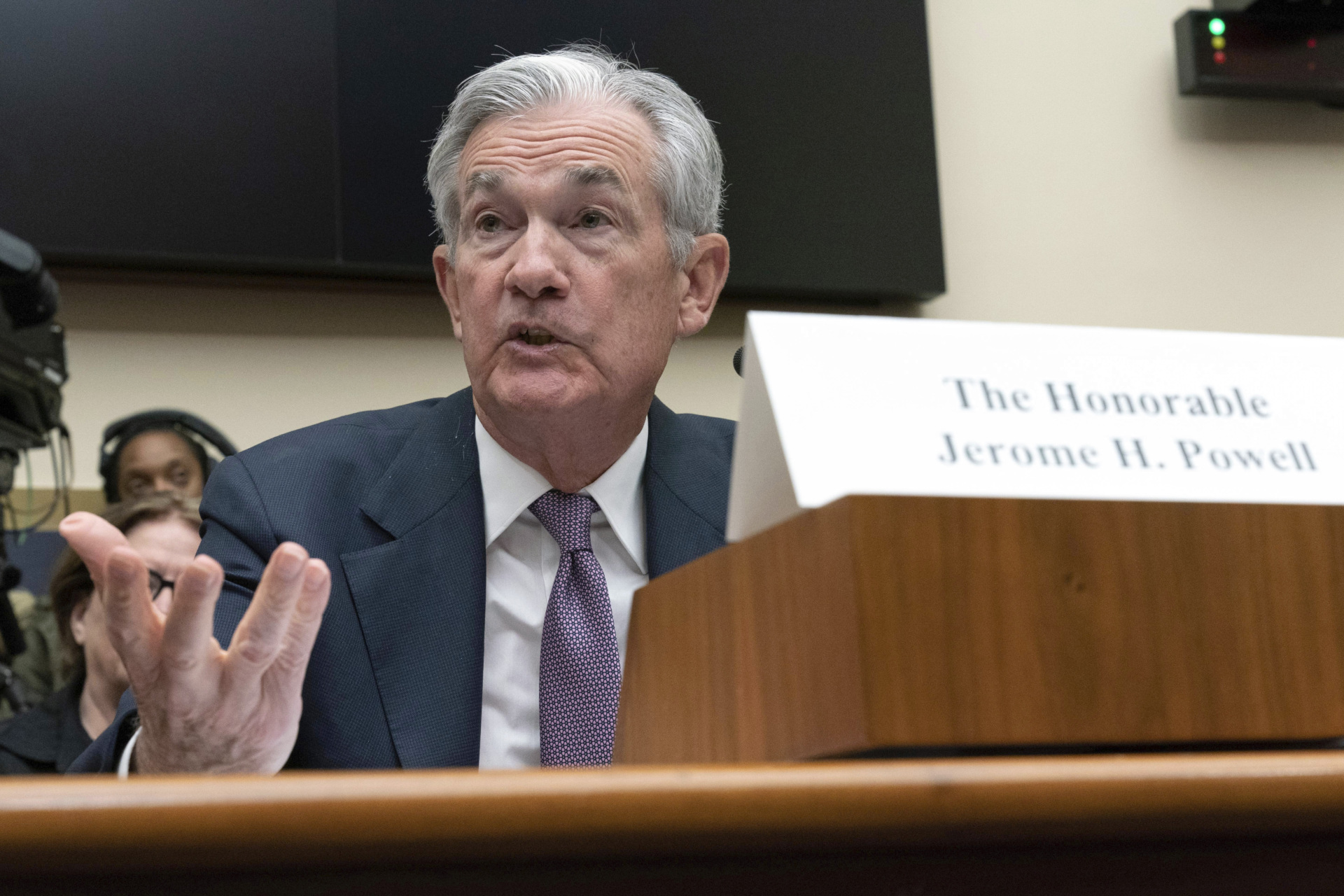Powell Says He Has an Open Mind Going in to March Meeting
If Federal Reserve Chair Jerome Powell was attempting on Wednesday to moderate expectations for a bigger rate increase later this month, he seems to have failed.
The market’s expectations for the rate hike coming out of the March meeting of the Federal Open Market Committee (FOMC) moved violently on Tuesday, as the Fed chief testified before the Senate Banking Committee. The odds implied by prices of fed funds futures flipped from a 70 percent chance of a quarter-point hike and 30 percent chance of a half-point hike to a 70 percent chance of the bigger hike and a 30 percent chance of a smaller hike.
In his testimony before a House Financial Services Committee today, Powell stressed that he and his fellow Fed officials have not yet made up their minds on the size of their interest-rate increase.
“We have not made any decision about the March meeting,” Powell said.

Federal Reserve Chair Jerome Powell speaks during a House Financial Services Committee hearing 0n March 8, 2023, on Capitol Hill. (AP Photo/Jose Luis Magana)
The market, however, became even more convinced that the Fed would implement a bigger hike. The odds of a half-a-point hike climbed to 79.4 percent, according to the CME Group’s Fedwatch tool. What’s more, the odds of a second half-point hike at the May meeting, which would bring the top of the Fed’s target range to 5.75 percent, jumped to 28 percent from 18 percent a day earlier. Before this week, the implied odds of reaching 5.75 were essentially zero.
Looking further out, the market appears to be no longer pricing in a rate cut before the end of the year. To the extent that Fed officials have been attempting to talk the market out of its prior conviction that the Fed would cut rates in the second half of 2023, the mission has been accomplished. The futures now imply nearly a 30 percent chance that we’ll end the year with a fed funds target above 5.75 percent. A month ago, the market was giving less than 10 percent odds of being above five percent.
The Labor Market Is Still Extremely Hot
One reason Powell’s message on Wednesday did not hold much water with investors is the evidence that demand for labor is still boiling hot. The ADP report showed private payrolls expanding by 242,000 jobs, up from ADP’s original January estimate of 109,000. The January estimate was revised up from to 119,000.
Of course, in January the ADP number was far below the estimate of the Labor Department, which saw private payrolls growing by a jaw-dropping 443,000. ADP says its number is no longer intended to line up with the Labor Department’s and is instead meant as an independent data point about the U.S. labor market. Still, the strength of the growth recorded in February suggests that we may be in for an upside surprise when the nonfarm payroll data is released on Friday.
The Job Openings and Labor Turnover Survey (JOLTS) also indicated stubborn strength. The last day of December figure was revised up to 11.2 million from 11 million. As a result, the ratio of vacancies to unemployed people in January is within rounding distance of the March 2022 record high of two-to-one.
Vacancies fell over the course of January but remain extremely elevated. The Labor Department said that we ended January with 10.8 million open jobs. This was a 0.3 percent decline but still more than the 10.5 million forecast. Even after the decline, vacancies are still higher than they were in October and November.

Construction Openings Jobs Cool Off
There was some relief in labor market tightness in the construction sector. The strength of job openings and payroll growth in construction amid the decline in housing starts has been puzzling analysts for months. From August through December, housing starts fell 10.8 percent while job openings grew 40 percent and total employment continued to climb.
The latest JOLTS figures showed a steep decline in openings, from 488 at the end of December to 248 at the end of January. Openings are now close to an historically normal level and actually below their prepandemic level for the first time since December of 2021. The most likely explanation is that some of the started but not completed homes from earlier last year have now been finished.

Even in construction, however, there was some mixed news in the JOLTS report. Hiring picked up, the second consecutive month of growth. And quits increased also, from 153,000 to 176,000. Quits are regarded as a sign of labor market tightness because workers tend to quit when they expect to easily find a better job.

COMMENTS
Please let us know if you're having issues with commenting.